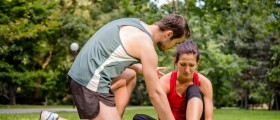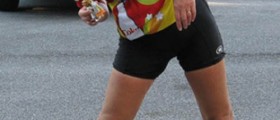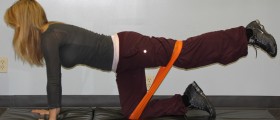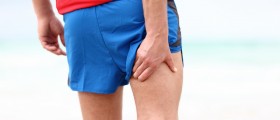Many people have at least once in their lifetime experienced a groin pull. This injury affects the muscles of the inner thigh. There are 6 adductor muscles in the inner part of the thigh in charge of pulling the legs together. They also participate in other movements of the hip joints. These muscles are frequently used by many athletes such as sprinters, swimmers, soccer players, etc. This is why such athletes commonly suffer from a groin pull.
Understanding the Injury
A groin pull develops due to strain of the inner thigh muscle. The injury is responsible for the excessive stretching of the muscle fibers. In the case of a not-so-severe groin pull, the affected muscle fibers are only excessively stretched.
On the other hand, severe groin pulls result in a complete tear of some or all muscle fibers. Fortunately, in the majority of cases, groin pulls represent nothing but minor tears of some muscle fibers while the remnant muscle fibers practically stay intact.

Staging Groin Pulls
All groin pulls are classified into III grades. In the grade I groin pull a person feels slight pain and discomfort. The injury is responsible for minimal limitation of normally performed activities.
In grade II groin pull, there is moderate pain in the groin area. The injured person cannot run or jump. The injured area is a bit swollen and may also be bruised.
Finally, grade III groin pull is characterized by severe pain which practically disables an individual. Swelling and bruising as well as muscle spasms occur soon after the injury.
Groin Pull Treatment
Treatment for groin pull may start after the doctor estimates the severity of the injury and rules out any additional damage to other structures besides inner thigh muscles.
The first thing one must do is abstain from activities that have led to the injury. This will allow the injured area to completely heal. Apart from not participating in over-strenuous activities, one is due to rest the injured area and the body in general. Rest is supposed to last for a few days when a person may start with certain activities.
Also, after consulting a well-experienced physical therapist one may be taught some stretching exercises. These will help the injured muscles to regain their strength.
Immediately after the injury one should start applying cold compresses to the injured area. These will reduce edema and may alleviate pain to a certain extent. If pain partially subsides, but cannot be controlled with cold compresses, one may consult his/her healthcare provider and receive some painkillers.
The injury soon heals and one may resume all the activities he/she participated in prior to the injury.
- Nine medical databases were searched in May 2014. Inclusion criteria: treatment studies in athletes with groin pain; randomised controlled trials, controlled clinical trials or case series; n>10; outcome measures describing number of recovered athletes, patient satisfaction, pain scores or functional outcome scores. One author screened search results, and two authors independently assessed study quality. A best evidence synthesis was performed. Relationships between quality score and outcomes were evaluated.
- 72 studies were included for quality analysis. Four studies were high quality. There is moderate evidence that, for adductor-related groin pain, active exercises compared with passive treatments improve success, multimodal treatment with a manual therapy technique shortens the time to return to sports compared with active exercises and adductor tenotomy improves treatment success over time.
- There is moderate evidence that for athletes with sportsman's hernia, surgery results in better treatment success then conservative treatment. There was a moderate and inverse correlation between study quality and treatment success (p

















Your thoughts on this
Loading...